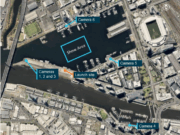The aviation industry already has begun a shift toward large unmanned aircraft systems, which will accelerate over the next 20 years to include wide body commercial airplanes, according to a study by the Aerospace Industries Association of America (AIA) and consulting firm Avascent.
The study, released last week, characterizes the transition as a continuation of a transformation of the aviation industry that began in the 1980s with the reduction of flight crews from three pilots to two and that has continued with a steady increase in cockpit automation.
“This is not going to be an overnight transformation,” the study said. “There will be distinct stages that reflect varied phases of adoption across aircraft weight classes, economic sectors and business models. Yet this future is moving from the theoretical to the practical faster than most anticipate.”
The report said that the first users of large unmanned aircraft will involve “sensor-focused roles” such as surveillance of activity on the ground. Energy companies, fire departments, farmers and construction firms will be among the users, the report said, adding, “While some of these users may currently fly small unmanned systems, a large unmanned aircraft’s dramatically improved endurance, more sophisticated sensor payloads and onboard data processing is transformational.”
By 2025, cargo aircraft are likely to be used for short-haul flights at relatively low altitudes, as well as intra-city passenger flights with pilots on board “as both a backup for the automated system and to mollify passengers who are not yet fully accustomed to this new experience,” the report said.
Early prototypes of long-haul passenger and cargo aircraft will probably be manufactured beginning around 2032, and are likely to still be flown with pilots on board as backups, the report said.
The report forecast “adoption headwinds” that probably will include consumer acceptance; liability and insurance issues; and infrastructure issues, including required modernization of airports to accommodate unmanned aircraft.


